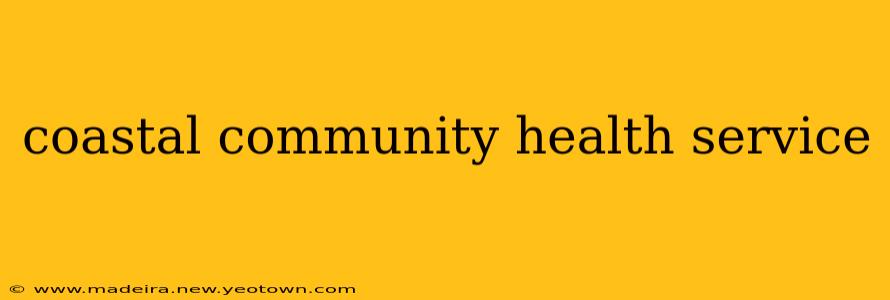Navigating the Tides of Health: Understanding Coastal Community Health Services
The rhythmic crashing of waves, the salty air, the breathtaking sunsets – coastal living paints a picturesque image. But beneath the surface of this idyllic scene lies a unique set of health challenges faced by coastal communities worldwide. These challenges, often intertwined with geographical limitations and economic factors, necessitate specialized healthcare services tailored to their specific needs. This journey explores the intricacies of coastal community health services, delving into the unique issues, innovative solutions, and the unwavering dedication of those who provide vital care in these often-isolated locations.
What are the unique challenges faced by coastal communities in accessing healthcare?
Coastal communities, while undeniably beautiful, frequently grapple with significant healthcare access barriers. Imagine a remote island community, miles from the nearest hospital, with limited transportation options and a fluctuating population due to seasonal tourism. This is the reality for many coastal populations. The primary challenges often revolve around:
- Geographic Isolation: Distance from major medical centers creates significant delays in receiving emergency care and accessing specialized treatments. Evacuations via boat or air can be costly and time-sensitive.
- Limited Resources: Coastal areas, especially smaller communities, often experience shortages of healthcare professionals, specialized equipment, and even basic medical supplies. Recruiting and retaining qualified staff can be particularly challenging.
- Economic Disparities: Many coastal economies rely heavily on fishing, tourism, or other industries susceptible to economic fluctuations. This can lead to lower income levels and limited access to health insurance, making healthcare affordability a major obstacle.
- Environmental Hazards: Coastal communities are vulnerable to natural disasters like hurricanes and floods, which can damage healthcare infrastructure and disrupt services. Exposure to environmental toxins from industrial activities or pollution also presents specific health risks.
- Specific Health Concerns: Coastal populations may face unique health problems like injuries related to fishing or boating, exposure to harmful algal blooms, and increased risk of certain infectious diseases.
What are some examples of innovative healthcare solutions used in coastal communities?
Despite these challenges, coastal communities are developing creative and effective healthcare solutions. These approaches often blend technology, community engagement, and collaboration to overcome geographical limitations and resource constraints:
- Telemedicine: Remote consultations with specialists via video conferencing are revolutionizing access to care, connecting patients with experts regardless of distance. This is especially crucial for addressing chronic conditions and providing mental health support.
- Mobile Health Clinics: Equipped vehicles travel to remote areas, providing essential services like preventative care, screenings, and basic treatment directly to the community. These mobile units address accessibility issues, bringing care to the people instead of vice-versa.
- Community Health Workers: Locally trained individuals act as a vital link between healthcare providers and the community, promoting health education, disease prevention, and early intervention. They often possess invaluable local knowledge and cultural sensitivity.
- Partnerships & Collaboration: Effective coastal community healthcare often relies on strong collaborations between local clinics, regional hospitals, government agencies, and non-profit organizations. These partnerships ensure a coordinated approach to addressing complex healthcare needs.
- Disaster Preparedness: Coastal communities are increasingly investing in disaster preparedness plans, including securing backup power sources, establishing evacuation routes, and developing emergency communication systems to maintain healthcare continuity during natural disasters.
How can I find coastal community health services near me?
Locating coastal community health services depends on your specific location. A starting point is contacting your local or regional health department. They can provide information on available clinics, hospitals, and specialized programs serving coastal areas. Online searches using terms like "coastal health services [your state/region]" can also yield valuable results. Remember to check the websites of hospitals and clinics in your area for details about their services and outreach programs.
What are the future challenges for coastal community health services?
The future of coastal community health services will be shaped by evolving environmental challenges, technological advancements, and the ongoing need to address health equity. Adapting to climate change, investing in sustainable healthcare infrastructure, and ensuring equitable access to cutting-edge technologies will be paramount. Maintaining a robust workforce through recruitment and training initiatives, while enhancing community engagement strategies, will be crucial to fostering resilient and thriving coastal communities.
The story of coastal community health services is one of resilience, innovation, and unwavering commitment. By understanding the unique challenges and celebrating the remarkable solutions emerging in these communities, we can better support the health and well-being of those who call the coast home.

